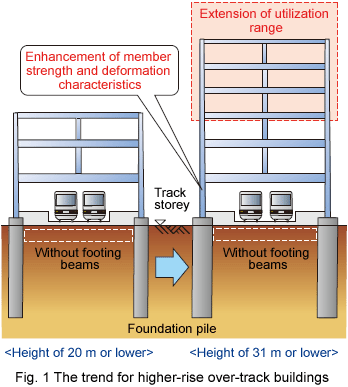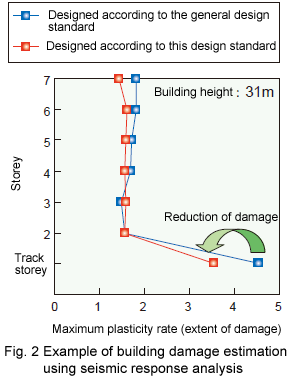In the structural design of buildings utilizing the over track space, the Standard for Structural Design of Over-track Low-rise Buildings for units with a height of 20 m or less (the height of general over-track stations) was enacted in 1987, and has since been applied as a standard structural design method. However, while the need for advanced utilization of the over track space is growing, complicated structural analysis must be executed for cases exceeding a height of 20 m. Because of this, an extension of the scope covered by the design standard was needed (Fig. 1).
Over-track buildings adopt a special structure pattern in which footing beams designed to establish a connection between piles are omitted (in contrast to general buildings) in consideration of constraints related to construction. On the other hand, such structures are required to have sufficient earthquake resistance to allow the safety of passengers and the operation of trains to be secured even in the event of a major earthquake.
Accordingly, the RTRI enhanced the strength and deformation characteristics of members against increased forces acting on pillars and piles in higher-rise buildings with the aim of reducing potential damage. Using seismic response analysis, the Institute also carefully verified that building collapse would not occur even in the event of a major earthquake (Fig. 2). Existing design standards were revised to create a design method compatible with heights of up to 31 m through other technical studies and discussions at committees involving experts of structural engineering. This method facilitates the design of mid-to-high-rise station buildings, making it suitable for a wide variety of uses including the structures of railway companies.
|



